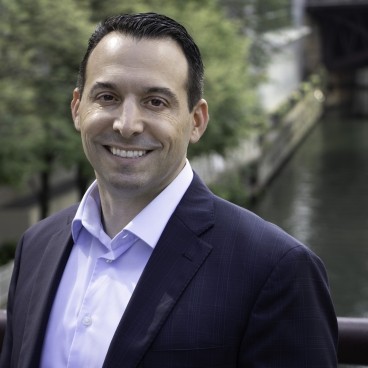Water Sector Must Take Bold Action to Address Global Clean Water Challenges
The quality and scarcity of clean water are two of the world’s most pressing issues. There has never been a more important time for leaders in the water industry to help solve this critical global challenge.
Global research and real-life events in the U.S. underscore the need for sustainable, clean water management practices and conservation efforts. Consider that:
- According to the United Nations, by 2030, global water demand is projected to exceed supply by 40%. Many cities in the U.S. and globally are running out of groundwater resources due to excessive demands, combined with challenging regulatory requirements and water quality impacts.
- The World Health Organization (WHO) reports that around two billion people worldwide consume contaminated water, leading to waterborne diseases such as cholera and dysentery. Inadequate wastewater treatment is a significant contributor to this problem, with approximately 80% of wastewater globally being discharged untreated.
- Drought impacts in California have resulted in severe water shortages, leading to crop losses, economic downturns, and water rationing measures.
- In many cities, lead contamination in drinking water systems has been a major public health challenge that has required prioritization and changes in public policy.
These global trends and real-world events exacerbate the fiscal challenges water utilities, especially in the U.S., face. Many of these fiscal shortfalls are a result of historically inadequate rate structures, declining revenues, and large fixed costs needed to maintain and operate those assets. At the same time, agencies are confronted by additional interrelated issues of economic sustainability, climate resiliency, rehabilitation of aging infrastructure, affordability, and equitable access to clean water for all. Some community organizations are taking notice and are actively engaging with utilities to better understand how these challenges are being addressed.
In the U.S., with the implementation of the historic Infrastructure Investment and Jobs Act, we have taken decisive steps to ensure that future generations can enjoy clean water.
The Act, the largest investment by the U.S. government in a half century, will improve aging water infrastructure and address climate, water quality, and environmental justice challenges. The Clean Water Act of the 1970s was the last time the water sector has seen such far-reaching legislation to address the disruptive change that was accelerated by the COVID-19 pandemic while also meeting local communities’ evolving needs.
But those in the water sector who see clean water issues holistically and with a global perspective on its societal impacts will be the ones who drive the change.
Leaders must address trends to build smarter and more equitable cities
Of course, much of what water leaders have been doing to meet the needs of their communities will continue. Utilities will identify and protect source waters. They will treat and disinfect water properly. They will plan for growth and have facilities available when needed.
However, as the future of the water industry unfolds, how utilities and consultants respond to these trends facing us — and how they will leverage investment dollars — will be key to ensuring access to clean water. Some of these trends include:
- The integration of advanced technologies, robotics, artificial intelligence, and communication technologies are transforming the water sector. For example, real-time sensor networks enable immediate detection of leaks and anomalies, reducing water losses. Artificial intelligence and machine learning algorithms are being employed to predict equipment failures in treatment facilities. This will evolve how water and water reclamation facilities are operated, and require a change in the skills and knowledge needed in the water workforce.
- New regulations to address emerging contaminants, such as PFAS, and improved water quality needs and demands can’t be ignored. The public’s justified demand that their communities be protected from contaminants must be the overarching goal of water utilities.
- Climate change requires sustainable and economically viable solutions to create more resilient communities and support the health of residents. Flood mitigation will continue to be a major part of the required solutions, not only at the treatment facilities, but in neighborhoods as well. Smart policy making and regional collaboration will also be needed for more adaptable communities in the face of a changing climate.
- The water sector’s ability to attract and retain talent has become increasingly challenged in recent years which means that we must evolve our approach to the water workforce of the future. As leaders, we must lead advancements in diversity, equity, and inclusion in the water workforce. Designing programs to encourage employment and contracting disadvantaged businesses, education, and community improvements along with infrastructure upgrades can lift a community. These programs promote economic inclusion, create job opportunities, assist with revitalizing low-income neighborhoods, and create community improvements.
- Water can be a force for equity and opportunity. It can revitalize and strengthen communities, making them more inclusive and resilient. The implementation of water equity roadmaps in cities will lead to more equitable and affordable water service, especially for underserved communities, while stimulating local economies and jobs.
Our success in addressing these trends will require that we anticipate the needs of communities and translate scientific knowledge into practical solutions. The historic implementation of the Infrastructure Investment and Jobs Act in the U.S.; continuous advances in technology; and a global willingness to collaborate gives us the foundation to develop equitable, environmentally sensitive solutions to provide clean, safe, affordable water.
But bold leadership is needed, and all of us play a role as stewards of the water sector and the communities we serve. It’s our obligation to help create a better future.

With nearly 25 years of expertise in the water industry, Michael is a visionary leader committed to client service and developing innovative solutions that address the water, wastewater, and stormwater challenges of the communities we serve. His dedication and passion to enhance the quality of our planet’s most precious resource are the driving forces behind his collaborative efforts to develop design solutions that revolutionize water infrastructure and ensure public health and safety. He has held leadership roles in professional organizations including the Water Environment Federation and the American Water Works Association, among others.
